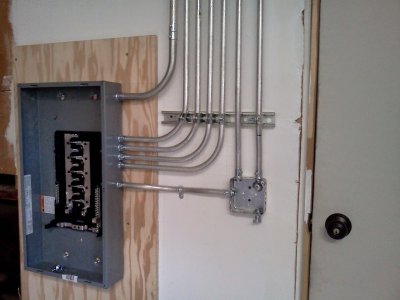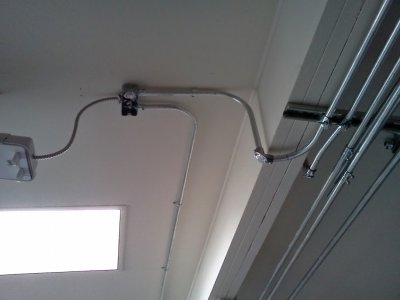My new house came with a 25x27 stick built shop. It has 10 ft walls framed with 2x4s, 16 ft overhead door, man door, and one north facing window. It is unfinished. I would like to insulate, Sheetrock, and instal some heat and ac. This means I need to wire it first! Starting from a 100 amp box there are two 220v 50a welder circuits, one 220v 20a circuit, one 110v 20a lighting circuit, two 110v 20a outlet circuits, and one 15a outdoor light circuit. Leaving six empty slots.
Help me figure out what else I should wire up to facilitate a general metal shop before I close up the walls! I plan to at least wire in a 220v circuit for heater and air conditioner, an outlet for a future door opener, and add more 110v outlets then the current 4 (one per wall).
I hope to have a lathe (13"-15"), Bridgeport type mill, drill press, saw, grinder, welder and maybe a smaller cnc mill eventually. All this will be slowly acquired most likely through craigslist or similar second hand route. I'd like to not handy cap myself in the beginning.
Thanks in advance for the help!
Help me figure out what else I should wire up to facilitate a general metal shop before I close up the walls! I plan to at least wire in a 220v circuit for heater and air conditioner, an outlet for a future door opener, and add more 110v outlets then the current 4 (one per wall).
I hope to have a lathe (13"-15"), Bridgeport type mill, drill press, saw, grinder, welder and maybe a smaller cnc mill eventually. All this will be slowly acquired most likely through craigslist or similar second hand route. I'd like to not handy cap myself in the beginning.
Thanks in advance for the help!



